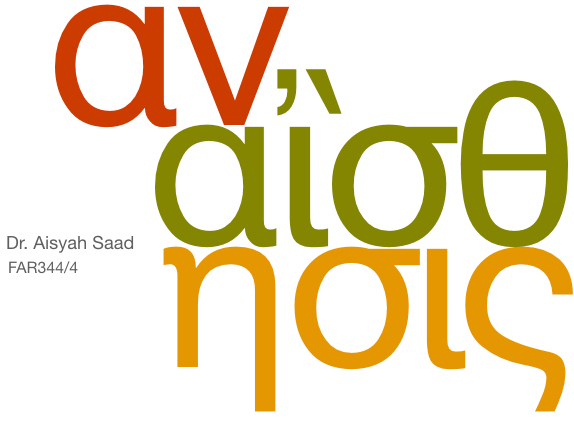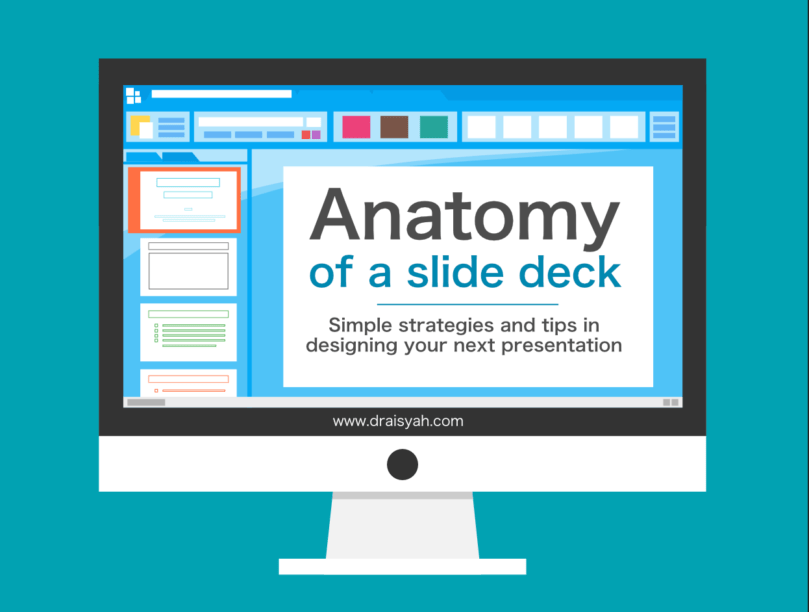
I’m preparing slide decks for Cardiovascular System and Therapy paper. The first one I tackled is the chemistry of cardiac glycosides. Digoxin, digitoxin. Seen and handled them for patients ages ago. Now I need to delve deeper into the alchemy of drugs, mainly sourced from Digitalis purpurea. In this blog post, I’m unpacking the unseen structures (anatomy) of my slide deck. I will also share some creative (& uncreative) processes of creating a slide deck on cardiac glycosides (CG).
The internal structures revealed
Below is an interactive visual of my slide deck. Hover and click on the slides to learn more about its anatomy. You can also click on the hand icon (top right-hand corner) to reveal the interactive hotspots.
Click on the bottom right-hand corner to open/enlarge this visual in a new window. View it better on a tablet or laptop/desktop. I hope you could see clearly how the different elements are put together; these are accompanied with presentation strategies and tips. The longer version is unpacked, slide-by-slide, as follows:
Slide 1 | Title slide
I was playing with ‘advanced gradient fill’ with a grey box. Interestingly, it gave a spotlight effect. The little blue triangle at the bottom corner means there’s an animation on this slide.
Slide 2 | Essential reading
This should come early for any lecture. Use book cover graphics for easier identification. The QR code is for a url. Easily scanned with a mobile phone nowadays.
Slide 3 | What will you learn
Normally a talk outline is placed here. I feel it’d be more relevant to students when it’s presented as a journey with mini-learning outcomes .
Slide 4 | Visual brief from Compoundchem.com
This infographic succinctly introduces cardiac glycosides from foxgloves. CC BY-NC-ND.
Slides 5-7 | Review previous lessons
In this integrated paper, the pharmacology lectures precede my chemistry classes. I included a brief review on the pharmacology of CGs before starting my part on chemistry.
For educators, it’s important to tie in with an earlier (and a later) part so that students can understand how different parts of the course fit together. Check out Chapter 4 in the excellent book ‘How Learning Works: Seven Research-Based Principles for Smart Teaching‘.
Slides 8, 9 | Introduction to Cardiac Glycosides
I love to start my lecture with a photo that piques the interests of my audience. Here is a picture of foxglove, obtained from Pixabay. It could be on history, technology, designs or interesting aspects of that topic. Another example is the title slide below for general anaesthesia for FAR344 CNS therapy – in Greek 😉

Dr. Aisyah Saad, 2018
Slide 9 | Tip – Gradient fill
Another tip is to explore the gradient function in your presentation app. In Keynote, I can adjust the intensity and gradient of a particular area of a background. Thus, a blacker background (on the left) to give contrast to the white text, and a more transparent (on the right) to show the foxglove flowers.
Slides 10, 11 | State the essence of your lecture
and your students will thank you for these points. The “yellow highlighter” was designed using a line. Change the colour to lemon yellow and the stroke to something a bit more fancy like a highlighter. Another tip for you.
The chemical structures are drawn in ChemDraw.
Slide 12 | Intro slide to the chemistry & structures of CG
I purposely left the drug structures a little later – the context and its clinical importance need to be presented and understood first. Also it’s because these CGs are natural products having huge structures – don’t want to scare my students…
I approach this topic by presenting them a simple as possible, in smallest building blocks that are familiar and thus easier to digest for my students. Here the steroid backbone and its four rings are introduced. See the next slides where I break the structures down and then build them up.
Slides 13, 14 | The chemistry CG continues…
Here important functional groups on the steroid backbone are introduced–one group at a time. Colours are used to highlight the points of attachment/groups.
Note: The interactive image is included again here for your convenience.
Slides 15, 16 | The chemistry CG continues… with colours
Presentations in higher education tend to use black, though black is not the only colour. And Powerpoint provides a great colour scheme if you know how to use it. Here you can see that I use:
- pink for sugars,
- blue to non-sugar components,
- green for a ring;
- dark executive grey for the text,
- deep violet to highlight salient points.
Make sure the selected colours remain consistent throughout your slide. Build your own colour scheme for your presentations–it’s a part of building the brand of YOU in your professional circle.
Slide 17 | The world is not flat…
Why is this 3D model significant to my students? From a 2D perspective, the steroid structure looks flat. The 3D model, however, provides a more realistic view of the structure. It’s a U-shaped backbone, not flat. The shape of these drugs dictates its potency in helping heart failure patients.
As mentioned in an earlier blog post, a drug structure holds the many secrets to its usefulness in clinical settings and side/adverse effects. I strongly feel our role as educators is to pull down the barriers, as to expose our students closer to the truth. Debunk the myth to help them understand that the world is not flat…
Slides 18, 19 | Question & answer time.
Chemistry can be quite a heavy stuff for many. Checking for student’s understanding would not only to quickly see what’s the learning gains (or losses?), but provide them a short break. I often break a lecture slot into short lectures (lecturettes) of 10-15 minutes. Nowadays, it’s often shorter 5 mins due to shorter attention span of the millennials.
Slides 20-22 | The sweet stuff
Here are the part where I would introduce the sugars commonly found in CGs and the types of sugar. Interestingly, the two most common for digitalis glycosides are digitoxose and glucose. My PhD is in sugar chemistry; the sugar I ‘played’ with was L-fucose. So I have the inner alchemist that would seek out the various OH groups, their configurations and origins. Geeky 😎
Slides 23, 24 | How would chemical groups affect drug potency?
a.k.a. structure-activity relationship (SAR) of a drug. The heart of any drugs as the chemical groups (OH, sugars, shapes) influence the drug activity and how it acts on the enzyme/receptor. Quick overview first on Slide 23.
Slide 25 | Zooming-in into the secrets
Now I would spend like 10 minutes explaining the SAR of these drugs in-depth. Where sections of the drug molecule are scrutinised and justified in relation to its activities/function as a drug for congestive heart failure. The salient points are highlighted in deep violet.
These are parts of the secrets, the heart of many clinical manifestations of any drug.
Slide 26 | Zooming out and back to pharmacology
Now I take my students back to – where do these drugs act in the body? And at which phase of the action potential can the drugs affect?
Zooming in and out of a system is necessary. These would help students gaining better understanding of the drug’s functionalities and these relate to the rest of the system.
The action potential of the heart muscles was drawn using lines in Keynote. Each line can be shaped further into curves etc by making it editable.
Conclusion slides 27, 28 | Re-cap and debriefing
These two strategies are important in one’s learning process and contribute towards sense-making in any topics.
Hope the ‘anatomical lessons’ may prove useful for you in designing your next presentation. Let me know if you have any questions. Share your thoughts below in the comments box.

Comments are closed.